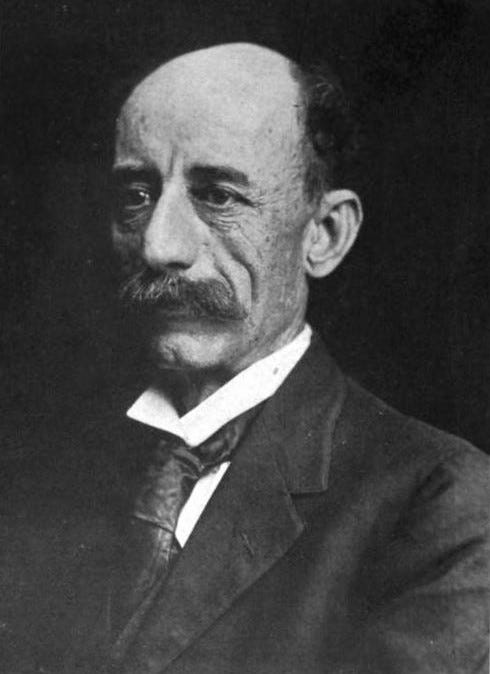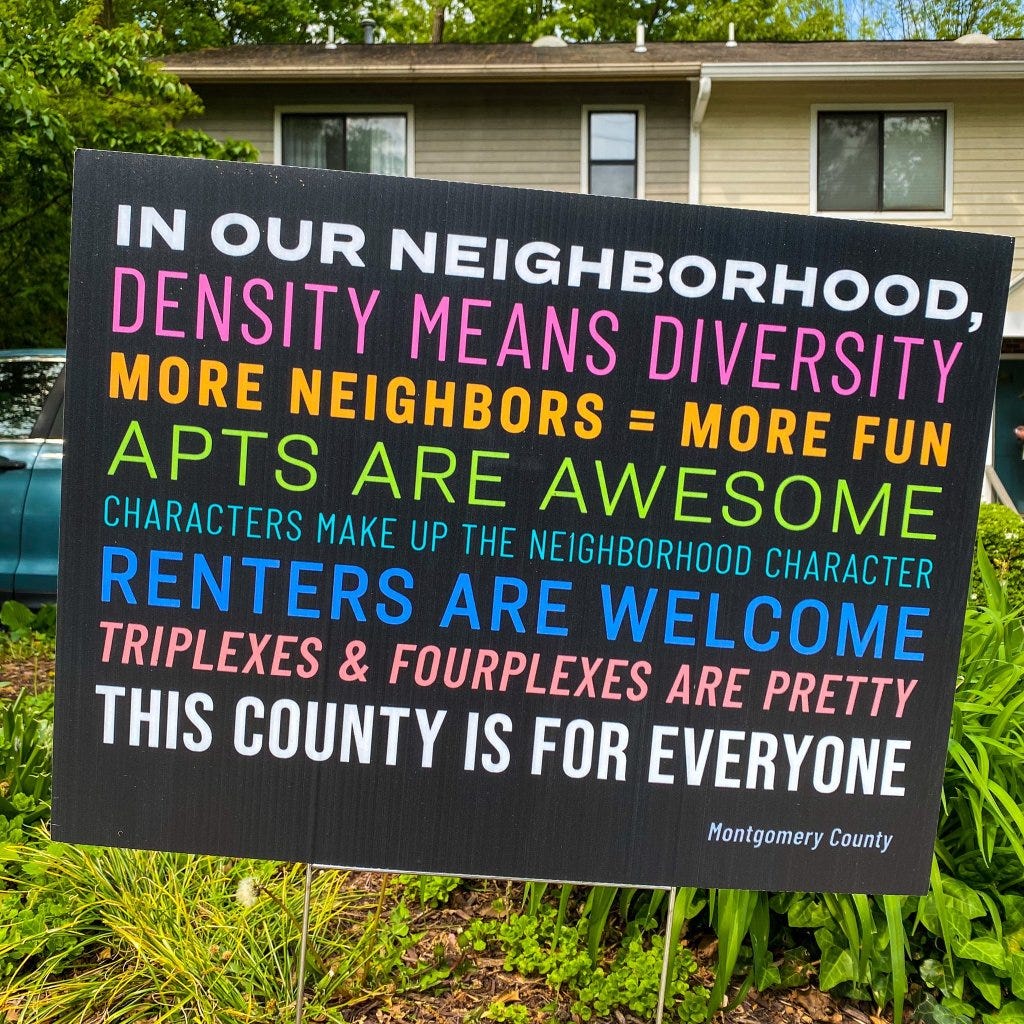$4,000 per year to every citizen of Boston?
A simple plan for city's to dip their toes into Georgist waters.
Land Value Taxes face structural hurdles that can drive even the most ardent Georgist to despair.
My home state of California’s infamous (or beloved depending on your perspective) Prop 13 caps the tax rate for property at 1% and limits the amount that can be increased in a given year to 2%.
After Houston politician and later mayor, Joseph J. Pastoriza implemented a Land Value Tax in 1912, the Texas Supreme Court declared it unconstitutional in 1915.
Adding insult to injury, federal policy over (e.g. the mortgage tax deduction and loose monetary policy) the past 75 years has created an army of people whose home represents most of thier wealth. In 2020, 27% of American Wealth was tied up in home equity, however, the median US household has 68% of their wealth tied up in their primary residence.
And of course many home owning progressives wear their values on their lawn signs but not necessarily in the housing policies they support.
But there is good news!
Matt Prewitt and Joel Rogers have a simple roadmap for a Georgist experiment that could avoid some of these issues and allow a single city to try a low-risk, Georgist experiment.
Here is the roadmap:
Start with a single city, not suburbs or nation-wide reform
Create an Urban Wealth Fund for city-owned land
Manage the Urban Wealth Fund via Georgists principles
Create a UBI paid out by the Urban Wealth Fund
(Kick back and watch home values rise, land use get better, and city coffers overfloweth)
Oh, and it might end up with every citizen of Boston getting a check for $4,000 every year?
Step 1: Start a single city, not suburbs or nation-wide reform
There are 3 reasons to start with cities and leave suburban homeowners alone (and we only need one city to try this out at first):
1. Our most prosperous cities face our biggest land crises. The big cities are where homes and child care are most expensive, and homelessness is most acute. The big cities are where public expenditure on things like public transportation never seem to be enough.
2. Cities have a lot of renters. San Francisco is 62% renter occupied. Manhattan is 76%. LA is 63%. Denver is 50%. Seattle is 55%. Places with more renters are more likely to vote for Georgist policies that help renters share in the prosperity caused by rising land values.

3. City governments are sitting on a ton of wealth - in fact much more than they realize. It turns out cities tend to own a lot of Land already. A lot of it is due to the fact that city governments have been around for a long time. And we’re not talking about privatizing parks and government buildings. Cities often have commercial real estate and parking lots for maintenance vehicles haphazardly strewn across the city.
Most of this city-owned property is valued at the rate when the city first acquired it - a building acquired in 1920 might still be valued at 1920 levels. Accordingly, cities are chronically undervaluing their Land wealth.
In 2014, Boston updated the valuations of their land to current market prices and realized that they had been underestimating their real estate by 40x! They thought they had $1.4B in real estate, but they actually had $55B according to current market rates.
According to Prewittt and Rogers, “A similar story unfolded in Pittsburgh, when it did the analysis (taking only two weeks and $20,000) and found it had undervalued its property holding by nearly 70 times!”
Even if you aren’t a Georgist, properly valuing real estate assets at least makes your city more creditworthy and that alone should save taxpayers money!
But it also allows you to create an Urban Wealth Fund to help cities get more out of their real estate for their citizens.
Step 2: Create an Urban Wealth Fund for city-owned land

Once the city has a better understanding of its real estate assets, it can transfer them to a politically independent Urban Wealth Fund. Urban Wealth Funds have a mandate to transparently maximize returns for the city.
Sometimes cities suck at managing their wealth. In 2008, Chicago sold a 75 year lease on its parking meters for $1.15B. By 2019, the purchaser had recouped their billion dollar investment, plus another $500M - and they still had 64 years to go on their lease!
Stories like this rightfully leave a bad taste about neoliberal “privatization”. But an Urban Wealth Fund is not privatization! Privatization is selling off land and contracts in desperate times for less than market value and for a one-time windfall.
The UWF creates a recurring revenue stream from the city’s land to be reinvested back in the public interest. It is specifically designed to stop cities from permanently selling off their assets to private interests for short term gains in moments of weakness.
UWFs unleash the power of wealth generation but on behalf of citizens. They are run by professional managers who get paid handsomely to make the public rich.
UWFs also bring some strategic oversight to land that is generally managed by dispeate city departments who are not experts at real estate management.
Many European cities like Copenhagen, Hamburg, and London have already built Urban Wealth Funds.

According to Shayne Kavanagh and Dag Detter:
Hong Kong’s UWF funded construction of a subway system that rivals the NYC MTA’s system (in terms of track length and daily ridership) without using a single tax dollar. They also generously subsidize the system via the UWF.
Copenhagen’s Urban Wealth Fund created 33,000 new homes, 100,000 new work spaces, and a university for 20,000 students. It also had money left over to fund a subway expansion!
Hamburg’s UWF created 12,000 residential units, 12 new educational facilities, 45,000 workspaces, and a new state-of-the-art concert hall without raising any taxes!
Step 3: Manage city-owned land via Georgist principles

Urban Wealth Funds avoid the pitfall of selling city-owned land for a one-time windfall (ahem, Chicago).
Instead, Prewitt and Rogers propose that the UWF can manage a Georgist-inspired license called a SALSA (Self Assessed Licenses Sold at Auction). That’s a lot of words but it’s actually rather simple.
Each plot of city-owned land is assigned a SALSA license. To start, the UWF auctions off the licenses. Bidders are aware that in addition to buying the license, they must also pay an annual fee to the UWF that is a percentage of the most recent license value at auction (ideally 3-10% of the license value). License holders can develop the land however they see fit, so long as they pay the UWF their fee each year.
Every 12-months, the license returns to the auction block. If someone outbids the current license holder, they buy the license from the current holder and begin paying the UWF the annual fee at that new license value. In this way, SALSAs provide equity for license holders and an automatically resetting revenue stream for UWFs.
For example, let’s say a license for some city-owned waterfront property sells for $1M at auction with a 5% annual license fee. The UWF collects $1M plus a recurring revenue stream of $50,000 each year that the license value stays at $1M. The license holder can build whatever it wants on that land.
Let’s say in 2 years someone bids $2M for that license. They would pay the previous owner $2M - profit for the previous owner. And now the annual license fee resets to 5% of $2M. Now the city earns a stream of $100,000 per year. So the city makes more revenue as the land becomes more valuable.
Savvy readers will note that this is pure Georgism: land users pay the public to use land. They are allowed to profit from improving the land, but they must continue to pay to utilize land. The 3-10% fee is not arbitrary either! That’s the Capitalization Rate of Land and would operate as a pseudo Land Value Tax.
This simple implementation of a Land Value Tax for land the city already owns allows citizens to prosper when booms happen in their city.
Let’s say the next Google ends up with its headquarters on that newly developed waterfront land. Real estate values around that property will skyrocket. Businesses will flock to serve the employees and employees will want to live close by to work. This is good news - because now the public is profiting handsomely from this boom instead of private landlords.
Step 4: Create a Universal Basic Income
To make an UWF truly Georgist, UWF revenue should not go to a general fund managed by politicians. Instead, it should be used for 2 things:
Buying more land to grow the fund
Paying a dividend (aka UBI to all the city’s residents)

Imagine that Boston is able to take its aforementioned $55B in real estate assets and generate a 5% annual return on those assets (not unheard of in the private sector). That would be $2.75B in annual revenue for Boston’s citizens - without raising any taxes on anyone. With a population of 650,000, that is an annual $4,230.77 per citizen every year. That’s more than the average monthly rent for Boston.
Is there a single policy that could have that dramatic of an impact on the welfare of the citizens of Boston? Why are we not doing this? Can someone please check my math!? (And we could ensure that the dividend goes to the people who need it most by means testing it.)
Meanwhile the side effects will be more intensive use of land which should lead to more housing and more jobs.
Some years, the UWF could instead use the $2.75B to buy up more land for the public. In theory the UWF could be increasing the total value of its land holdings by up to 5% per year by reinvesting in real estate.
Everyone wins
This simple roadmap has several advantages over a traditional LVT.
First, it’s not a property tax and so would not be subject to laws like Prop 13 or the Texas statute.
Second, it doesn’t hurt existing landowners and homeowners. Quite the opposite! The UWF acts as a deep-pocketed buyer who actually bids up land values and makes land owners richer! It also avoids forcing anyone who doesn’t want to sell off their land.
Third, it provides our maxed out cities with a new source of wealth without raising taxes.
Finally, it’s a low-risk experiment.
This plan makes specific, testable predictions (e.g. it won’t lower land values, it will encourage development and growth which relieves pressure on prices, it won’t raise new taxes, it will help cities unlock more of their unused wealth). If it’s unpopular we never need to try it again. And the city has not sold off any of its assets.
Our cities face our biggest problems with land use. There are enough renters in cities to vote for this kind of policy. And we need not stir the hornet's nest of suburban homeowners.
UWFs are already doing great work in Europe and Asia. Why not try one here?







